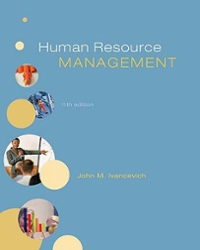Navigant Consulting Inc., a Chicago-based management consultancy, is the product of more than 25 acquisitions over six
Question:
Navigant Consulting Inc., a Chicago-based management consultancy, is the product of more than 25 acquisitions over six years. No wonder that, until recently, its short-term incentive pay system was seriously flawed. There was no consistent method of rewarding performance.
"It was difficult to manage so many disparate incentive tools," says Julie Howard, vice president and human-capital officer. "It was a mess." Even companies with only one system are struggling to make it more effective.
So last summer Navigant redesigned the system. Its short-term cash bonus plan now consists of two basic elements: Incentive pay for Navigant's 400 senior professionals is based largely on the company's performance, while its 800 consulting and administrative staff are rewarded primarily according to individual performance.
It's too soon to tell fully what effect the change has had, though already the company is seeing reduced attrition. The hope is that the incentive plan will help the nearly $600 million (in sales) company recover from years of losses. So far, "people are very excited about it," says Howard, who has been touring the country to explain the program to employees.
"Clarity is a big thing." Navigant is one of an increasing number of companies that now offer incentive pay to many nonmanagement personnel, linking pay more closely to performance, as it shifts from fixed to more-variable annual compensation. In a survey of 2,400 companies last year, consulting firm William M. Mercer found that 56 percent provided incentive pay to employees below the executive level (65 percent when nonprofit health care companies were excluded).
But companies clearly are struggling to design their incentive programs in an effective way. The soul-searching is aimed at motivating employees up and down the line to help companies meet their overall goals. Of course, plan specifics vary with a company's culture, size, industry, and competitive position. But any winning formula must address the following question: To what degree should payouts be linked to the performance of the corporation as a whole; to that of an employee's division, plant, team, or project; to the achievement of individual goals; or to some combination of all of these? Consultants say incentive programs on the leading edge are combining goals and custom-fitting the combination to the rank of employees, much the way Navigant has done.
At stake is nothing less than a company's ability to compete, and that challenge will only grow as the economy slows. No surprise then that CFOs are getting more deeply involved in design efforts. As the overseers of human resources, they view payroll expense increasingly as an investment in human capital, and incentive compensation as something that can improve the returns on that investment.
Questions
1. Why is it important to include operating employees (non-managers) in the development and use of an incentive program?
2. What is the individual performance modifier that the Towers Perrin survey identified? Explain it in managerial terms.
3. American Woodmark’s scorecard approach can be most effectively used with what type of organizations? Employees?
Step by Step Answer:






